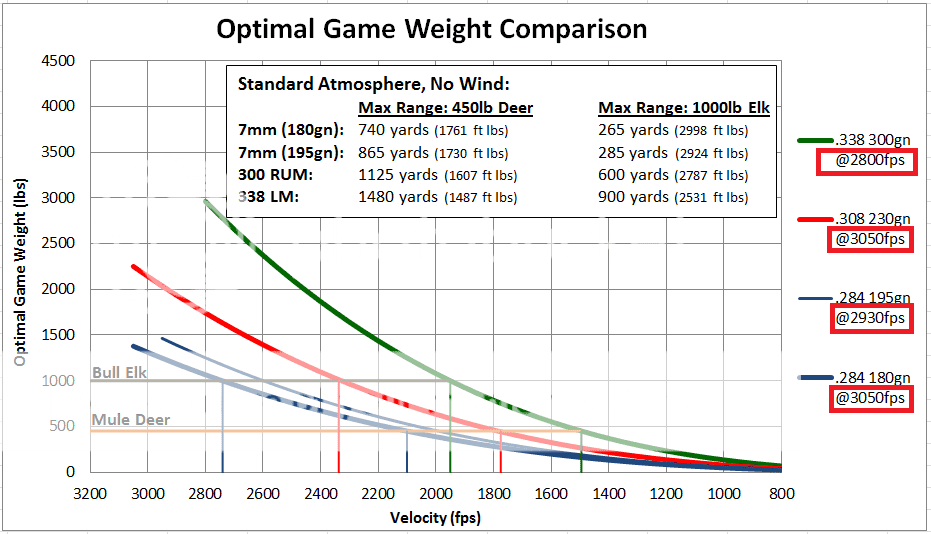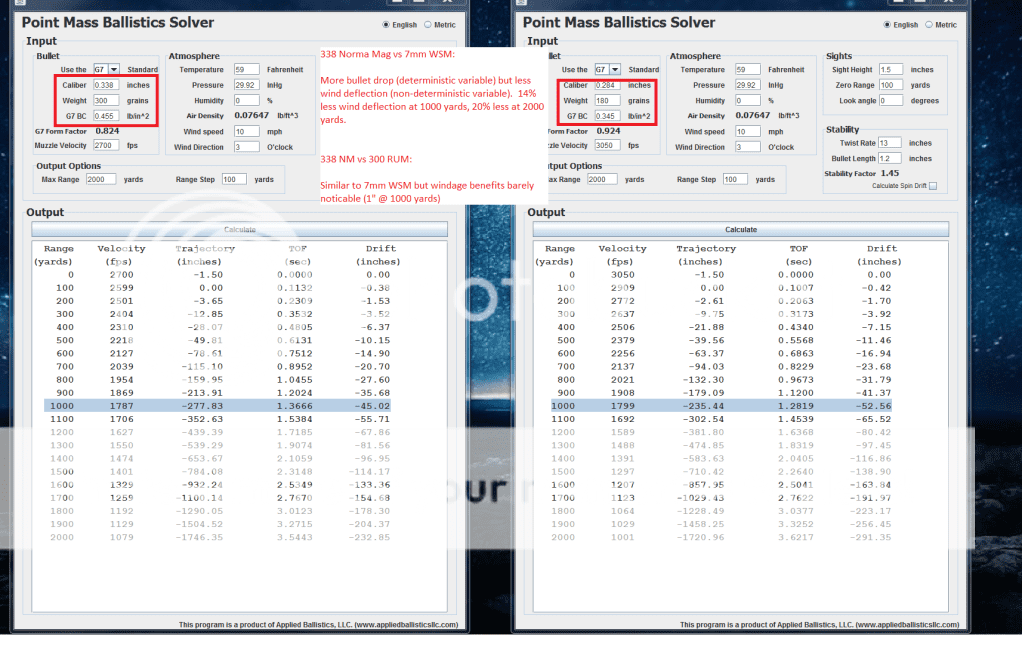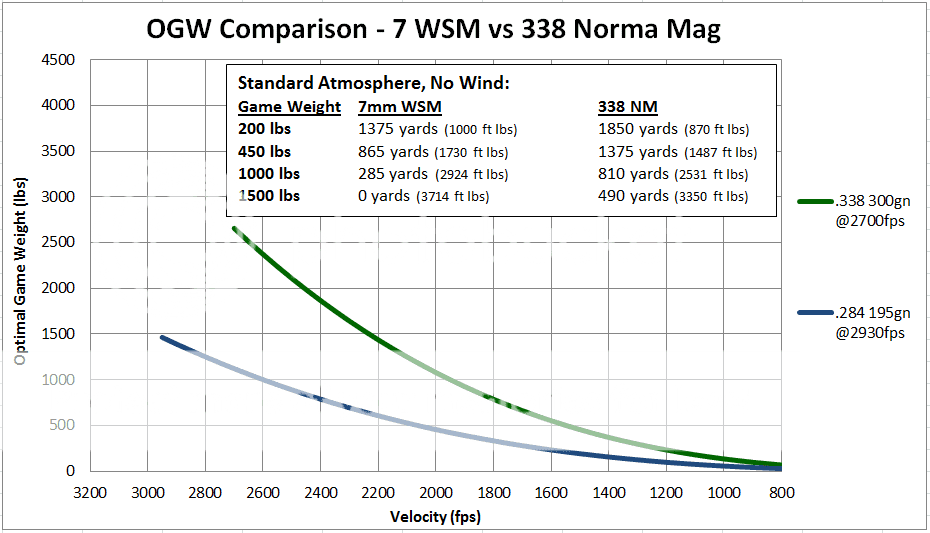Haagen Dazs
Well-Known Member
Hello,
A friend recently lent me a book I'm sure (and hope) many of you are familiar with. The book is 'Applied Ballistics for Long Range Shooting' by Bryan Litz from Berger Bullets. Wow, what an amazing book, definately going to buy one for myself! His style of writing really appeals to the aeronautical engineer in me. I don't even like reading books but this one is a real page turner; and here I was going into it thinking I knew it all. I was wrong.
Anyway, reading his chapters on bullet lethality and long range hit probability got me goin' on the spreadsheets. Matunas' Optimal Game Weight equation started making me criticize my earlier decision to use a 7mm WSM for a future long range hunting rig. From everything I had read previous to this book, the only good answer I could get for bullet lethality was '1000 ft pounds of force'. Maybe for a female deer but not for serious game as it turns out.
To start putting things into perspective, I plotted a graph of velocity vs OGW for a given calibre/bullet weight and then used the ballistics calculator to match a range to the required velocity to take out a large 1000lb Roosevelt Elk and a 450lb Mule Deer. I picked the 7mm WSM, 300 RUM, and 338 LM because they seem to be some of the most popular precise, non-belted, non-wildcat, 'moderate' barrel burning heavy hitters, all with comparable ballistics.
What I found was rather interesting and honestly, a little disappointing. The 7mm WSM isn't as powerful as I thought; however, it should still be able to take out an oversized Elk at short range (ideally, however, not with a fragile Berger), so not all hope was lost. I also stumbled upon a thread here on LRH spreading the rumor about the new Berger 7mm 195gn bullet. But I digress.
For this study, I used the heaviest, most aerodynamic bullets on the market, all from Berger. I used typical muzzle velocities for a 30" barrel and slow powder. If you can update my numbers based on your real life MVs, I'd be greatful!
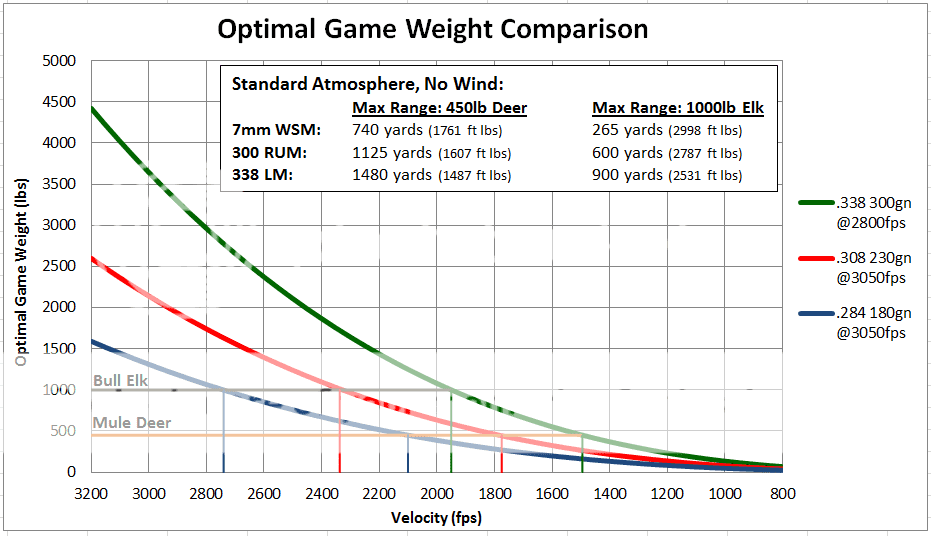
As you can see, the OGW method indicates that a heavier calibre requires less energy to take down an animal than the smaller calibre. Can anyone help me explain that one? I guess a larger hole means more hydrostatic shock or something...
After reading about the new 195gn 7mm bullet, I couldn't resist and modified the graph to include this new development. I used one of Bryan's formulas to calculate the new MV for the heavier bullet based on constant pressure. (M1V1^2 = M2V2^2)
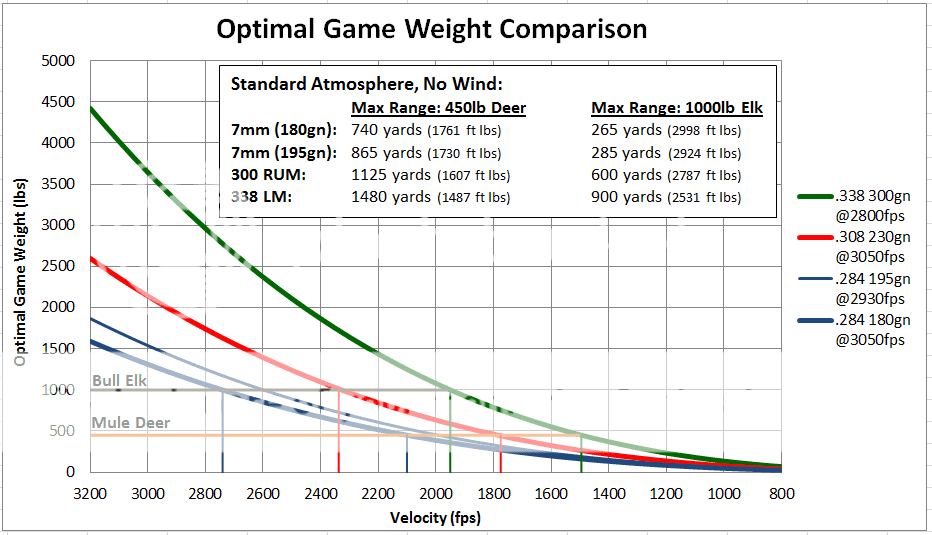
As you can see, there is not much of a benefit between the two bullet weights at short ranges on heavy animals. There's only a 20 yard benefit for the big 195gn on large elk. However, at extended ranges on smaller animals, this new bullet should give us an additional 125 yards of effective range on a large deer. Its not hard to assume this based on the higher BC and better retention of velocity, but I thought I'd make that conclusion while I was at it.
Look forward to hearing your thoughts!
Kevin
A friend recently lent me a book I'm sure (and hope) many of you are familiar with. The book is 'Applied Ballistics for Long Range Shooting' by Bryan Litz from Berger Bullets. Wow, what an amazing book, definately going to buy one for myself! His style of writing really appeals to the aeronautical engineer in me. I don't even like reading books but this one is a real page turner; and here I was going into it thinking I knew it all. I was wrong.
Anyway, reading his chapters on bullet lethality and long range hit probability got me goin' on the spreadsheets. Matunas' Optimal Game Weight equation started making me criticize my earlier decision to use a 7mm WSM for a future long range hunting rig. From everything I had read previous to this book, the only good answer I could get for bullet lethality was '1000 ft pounds of force'. Maybe for a female deer but not for serious game as it turns out.
To start putting things into perspective, I plotted a graph of velocity vs OGW for a given calibre/bullet weight and then used the ballistics calculator to match a range to the required velocity to take out a large 1000lb Roosevelt Elk and a 450lb Mule Deer. I picked the 7mm WSM, 300 RUM, and 338 LM because they seem to be some of the most popular precise, non-belted, non-wildcat, 'moderate' barrel burning heavy hitters, all with comparable ballistics.
What I found was rather interesting and honestly, a little disappointing. The 7mm WSM isn't as powerful as I thought; however, it should still be able to take out an oversized Elk at short range (ideally, however, not with a fragile Berger), so not all hope was lost. I also stumbled upon a thread here on LRH spreading the rumor about the new Berger 7mm 195gn bullet. But I digress.
For this study, I used the heaviest, most aerodynamic bullets on the market, all from Berger. I used typical muzzle velocities for a 30" barrel and slow powder. If you can update my numbers based on your real life MVs, I'd be greatful!

As you can see, the OGW method indicates that a heavier calibre requires less energy to take down an animal than the smaller calibre. Can anyone help me explain that one? I guess a larger hole means more hydrostatic shock or something...
After reading about the new 195gn 7mm bullet, I couldn't resist and modified the graph to include this new development. I used one of Bryan's formulas to calculate the new MV for the heavier bullet based on constant pressure. (M1V1^2 = M2V2^2)

As you can see, there is not much of a benefit between the two bullet weights at short ranges on heavy animals. There's only a 20 yard benefit for the big 195gn on large elk. However, at extended ranges on smaller animals, this new bullet should give us an additional 125 yards of effective range on a large deer. Its not hard to assume this based on the higher BC and better retention of velocity, but I thought I'd make that conclusion while I was at it.
Look forward to hearing your thoughts!
Kevin
Last edited:

